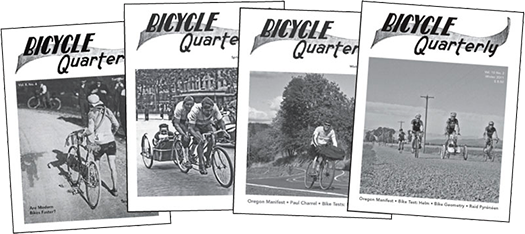The Porteurs of Paris
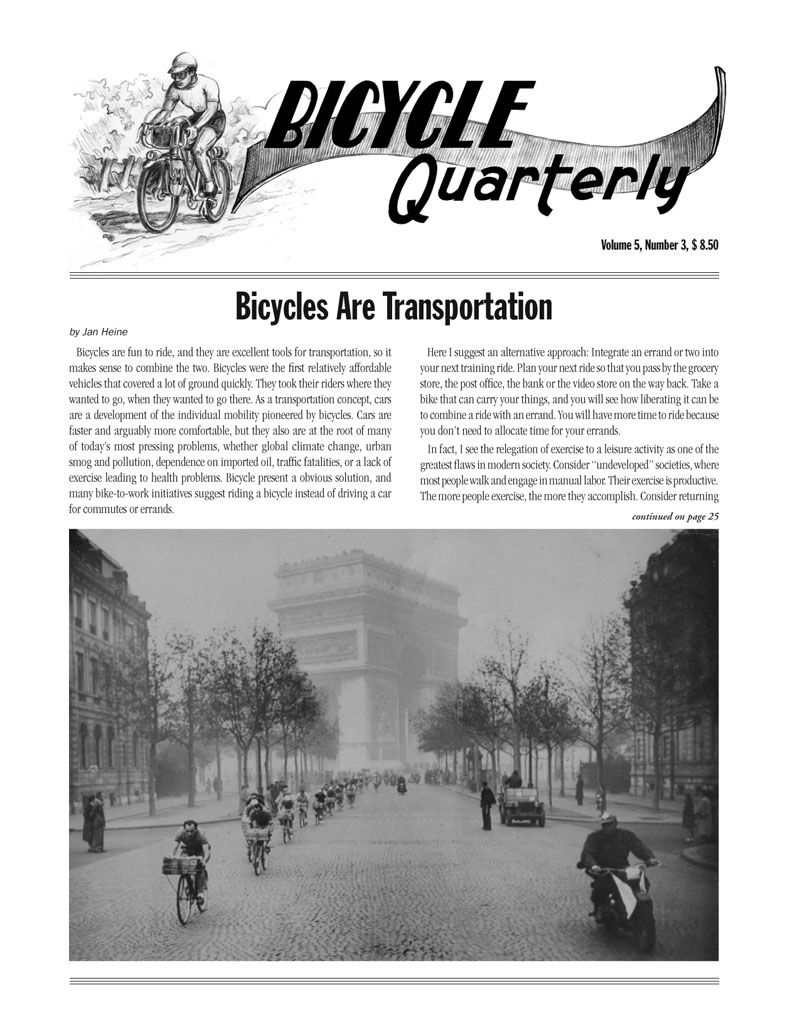
The cycling cultures of Paris in the 1940s and early 1950s were varied and interesting. A few years ago, Bicycle Quarterly Vol. 5, No. 3 used this culture as a starting point to explore cycling for transportation. The porteurs were a particularly fascinating mix of transportation and sport. They were newspaper couriers who delivered newspapers from the presses to the newsstands all over Paris.
What might have been a menial, minimum-wage job in other places evolved into a unique and even competitive facet of Paris’ cycling culture. For this issue of Bicycle Quarterly, I interviewed two porteurs de presse, Pierre Vitupier and Jacques Greiffenberg. Back then, newspapers published multiple editions every day, and delivery had to be swift. Couriers got paid per paper delivered, so the faster they rode, the more money they made. The best runs were those where the newsstands were just short distances apart. They were assigned by seniority… The two old porteurs explained how a good porteur could make more money than the directors of the newspaper where he worked.
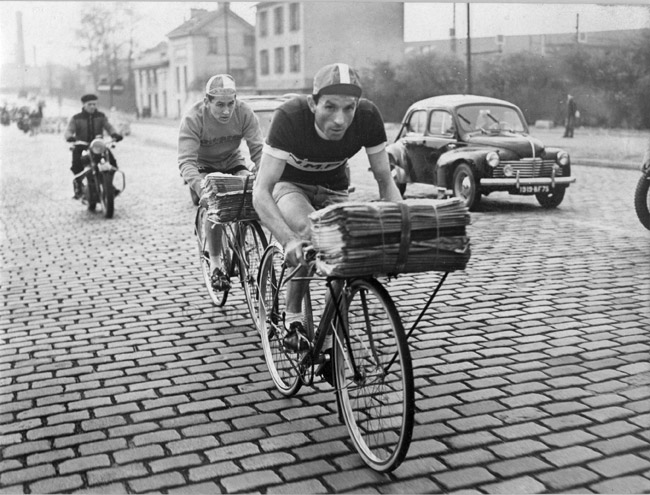
Many porteurs were amateur or semi-professional racers who used their jobs for training, so it was natural to organize a race of the porteurs every year. The course started in the newspaper quarter of Paris, went around the Boulevards Extérieurs before climbing the hill of Montmartre. Riders had to carry 15 kg (33 lb) of newspapers. At the half-way point, they had to exchange their load for another pack of newspapers. Much of the course went over cobblestones, and not all were as smooth as the ones in the photo above.
Pierre Vitupier explained: “I figured I came from a strong amateur racing team, and thought I could win against the porteurs while pedaling with only one leg… I came 6th or 7th. [The following year] I trained for the Championnat des Porteurs like I would for a road racing championship, 8000 km training on the road… I won the race.” The race was a big deal, with the main roads of Paris closed off for the event. The newspapers reported in great detail, as they would of a Tour de France stage.
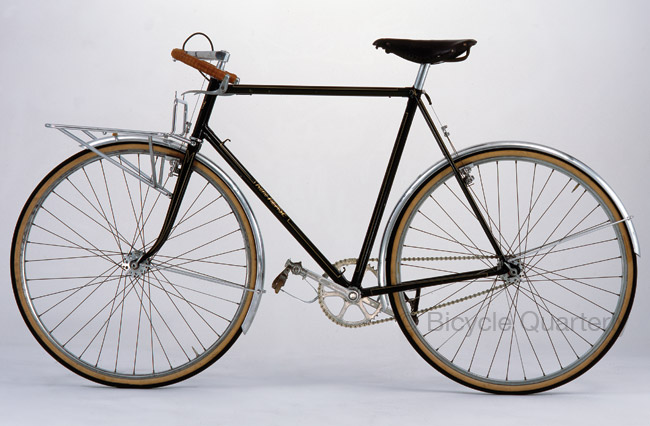
Many of the best-paid porteurs had custom bikes built: one for the daily job with wide 650B tires and large fenders, and one for the annual race, much lighter and basically a racing bike with fenders and a big front rack. A replica of one of the racing bikes, built up from a genuine frame and rack (above), is featured in our book The Competition Bicycle.
In addition to the interview with the two porteurs, Joel Metz summarized the history of the Championnat des Porteurs in the same issue of Bicycle Quarterly.
Moving on to cycling as transportation, we tested different ways to carry a heavy load, and compared different geometries to determine which is best-suited to different load carrying configurations.
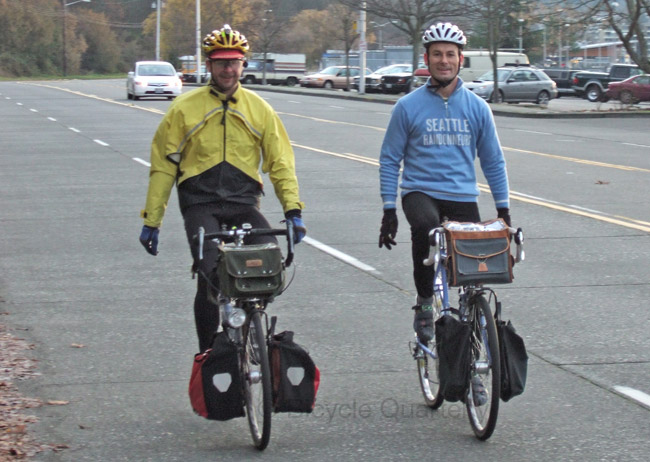
We do not say that you should ride your bike no-hands with 28 pounds of bricks in the front bags, but a good bike should make it possible to do so. That means that the bike will be stable in traffic, which increases your safety and enjoyment. We also found out why the old porteurs carried their heavy newspaper loads on a front, and not a rear, rack. It simply makes the bike more maneuverable, especially when riding out of the saddle in heavy traffic.
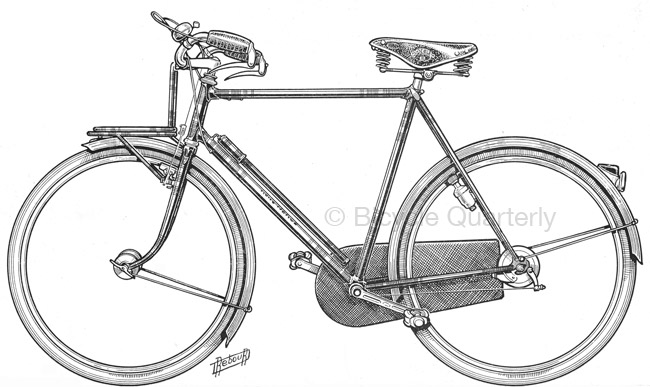
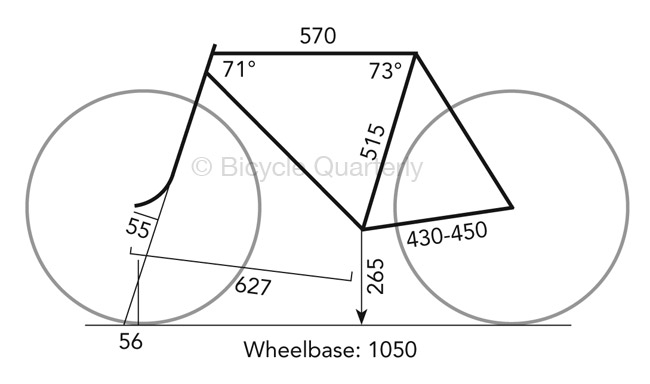
We did a comprehensive study of bicycle geometry under the title “How to Design a Well-Handling Bicycle.” We looked at historic examples of well-handling racing bikes, city bikes (above), randonneur bikes, touring bikes, even tandems and track bikes. We measured their geometries. We explained the factors that determine how a bike handles, and why some geometries work better than others.
Every issue of Bicycle Quarterly includes in-depth bike tests. For this issue, we tested three transportation bicycles:
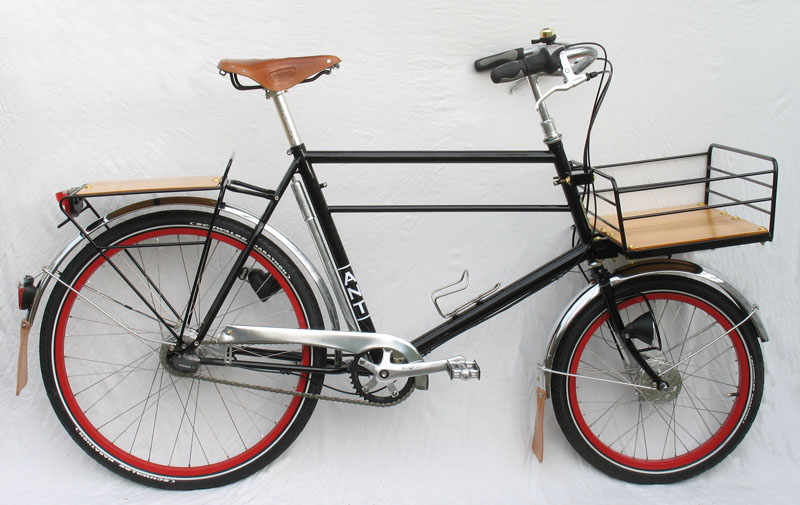
A custom-built Ant “Basket Bike” designed to carry heavy loads.
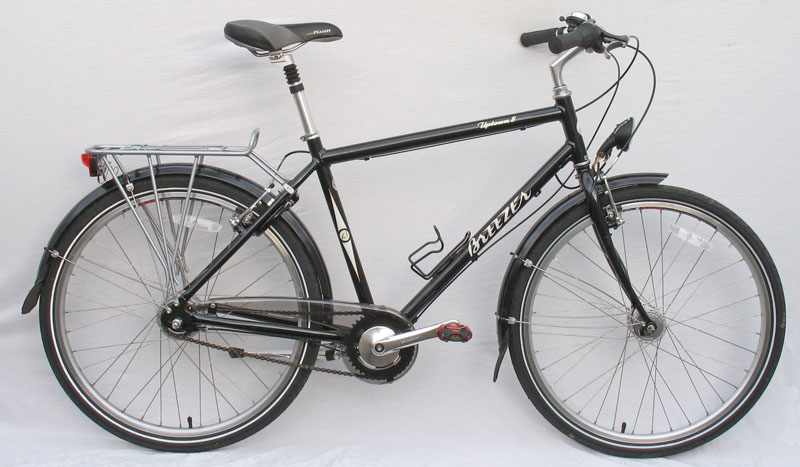
Breezer’s Uptown 8, fully equipped for riding every day.
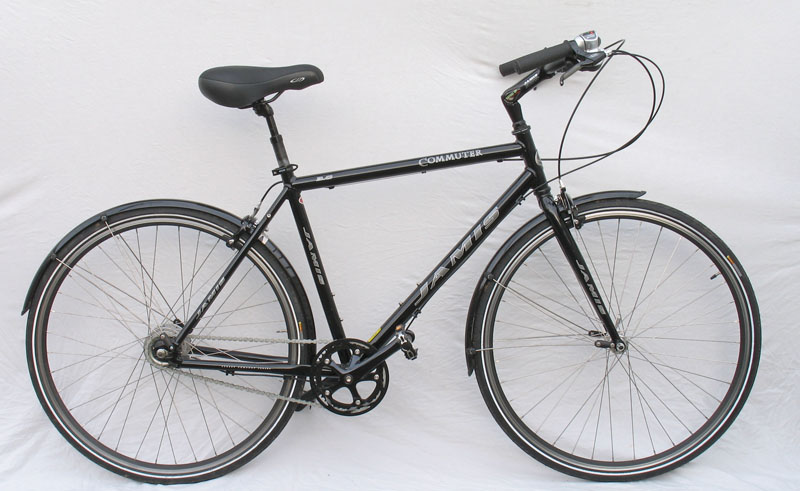
And the Jamis Commuter with a very affordable price tag.
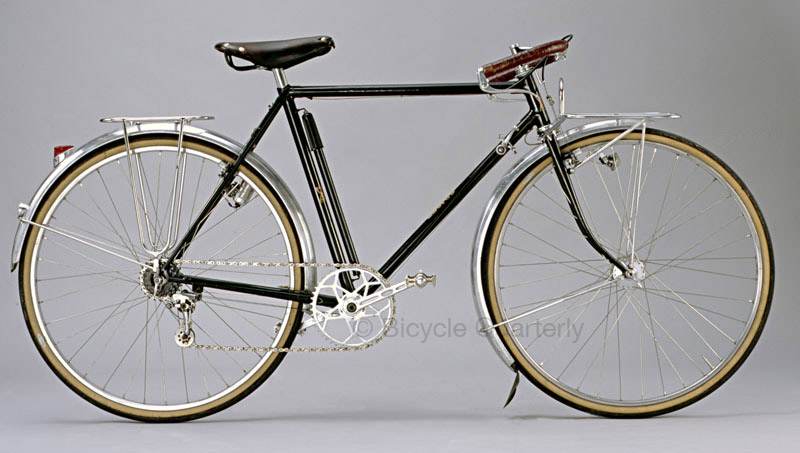
To provide some perspective, we featured a classic Alex Singer city bike (above).
Then there were more tests of tires, why tucking on downhills is faster than pedaling, as well as the columns My Favorite Bike, Builders Speak and much more.
Click here to order your copy of this exciting back issue (BQ 19) or to subscribe to Bicycle Quarterly.
